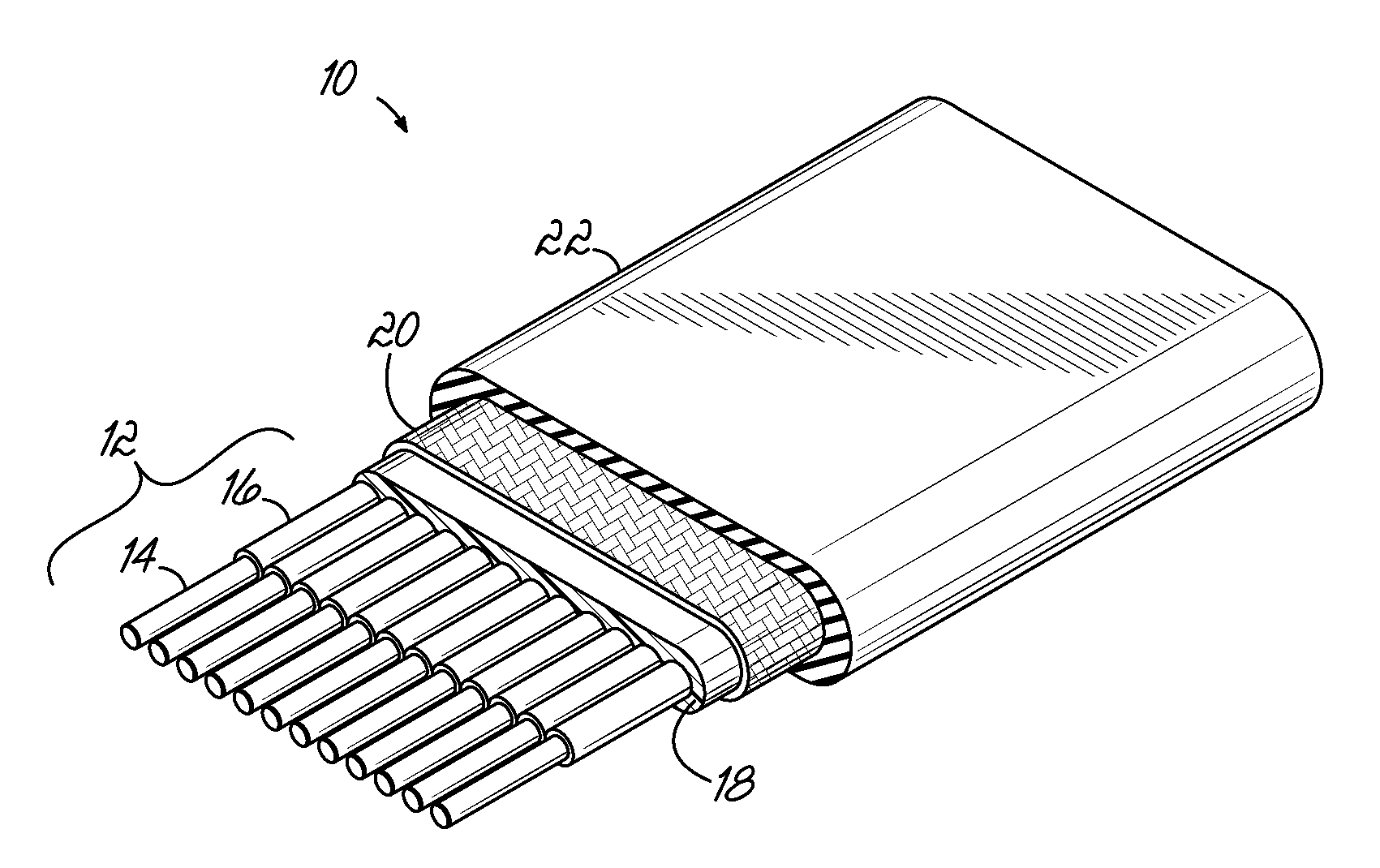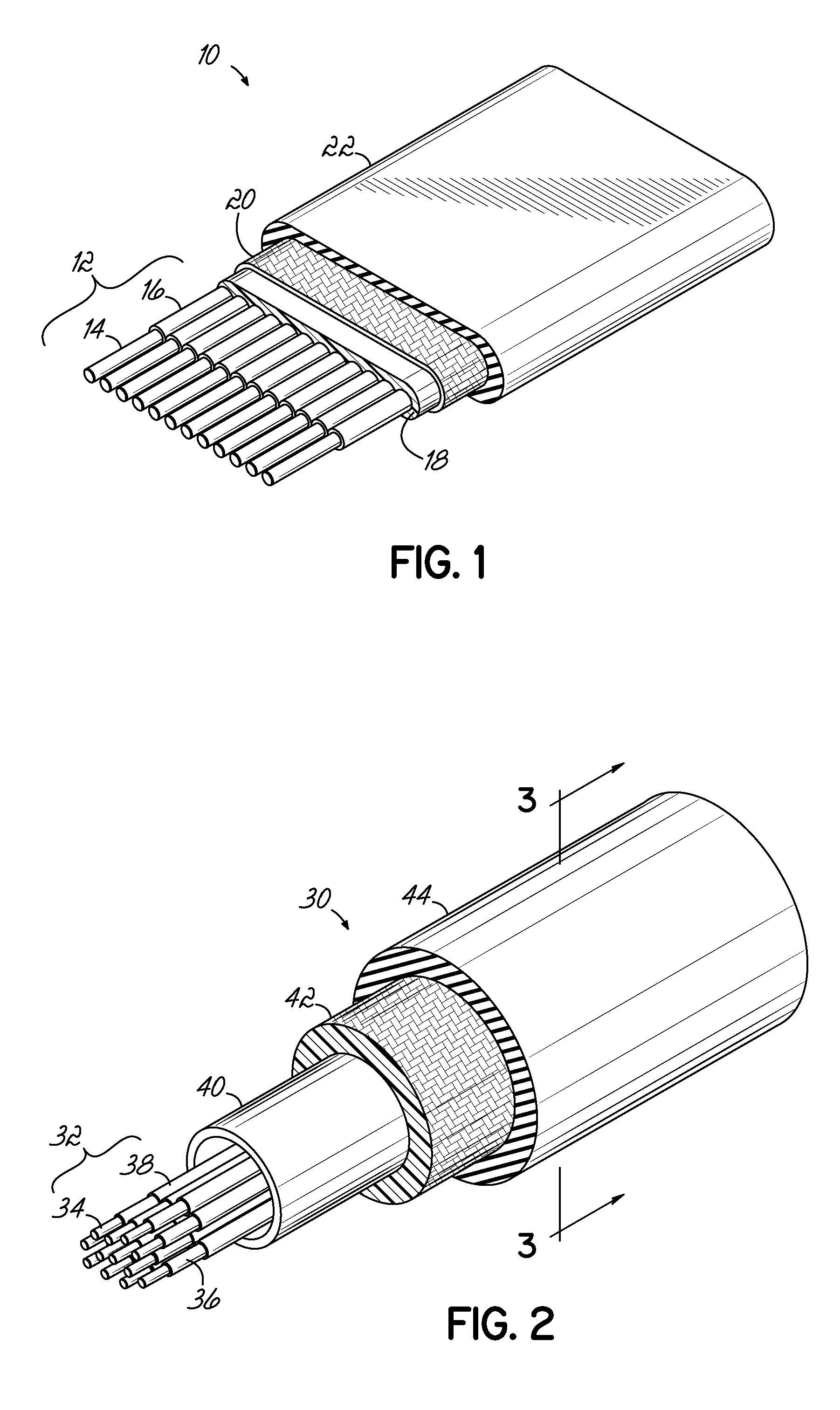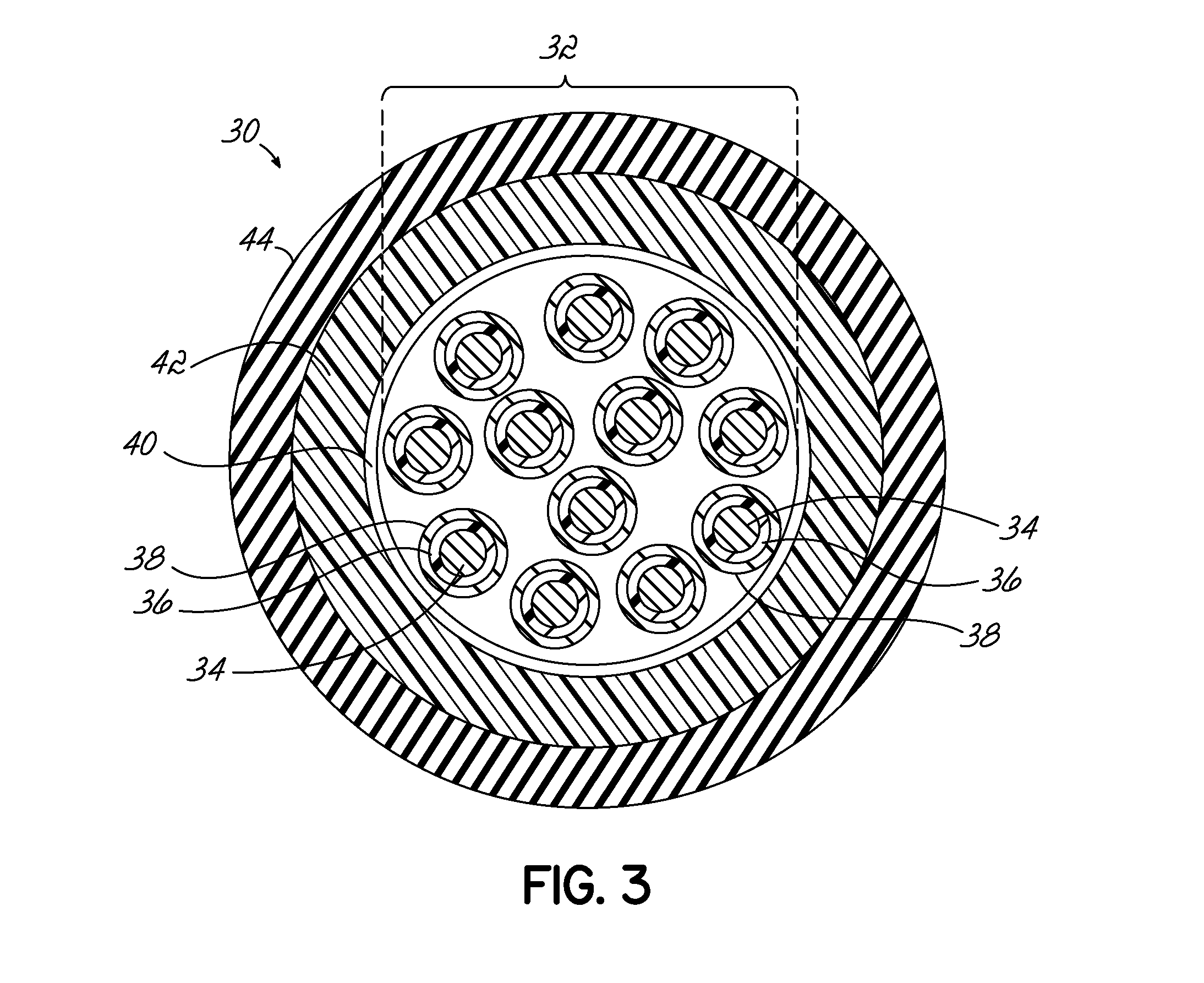Fiber optic cable and method of manufacture
- Summary
- Abstract
- Description
- Claims
- Application Information
AI Technical Summary
Benefits of technology
Problems solved by technology
Method used
Image
Examples
Embodiment Construction
[0031]The fiber-optic cable constructed in accordance with the aspects of the present invention provides a multiple fiber cable that has decreased susceptibility to crushing, pinching and other mechanical damage. Furthermore, the fiber-optic cable is configured in such a way that it tolerates high operating temperatures, produces low smoke and toxicity in the presence of fire, has a non-preferential bend axis, and is capable of use in high density optical packaging and fiber-optic connectors. Such design parameters are particularly important in aerospace applications where size and weight are critical factors and environmental conditions are harsh. In addition to meeting the design goals noted above, the present invention also provides improved bend / kink performance, so that the cable may be more vigorously implemented in tighter spaces. All of these various benefits are achieved as noted, without a degradation of the optical, mechanical or thermal performance the fiber-optic cable ...
PUM
 Login to View More
Login to View More Abstract
Description
Claims
Application Information
 Login to View More
Login to View More - R&D
- Intellectual Property
- Life Sciences
- Materials
- Tech Scout
- Unparalleled Data Quality
- Higher Quality Content
- 60% Fewer Hallucinations
Browse by: Latest US Patents, China's latest patents, Technical Efficacy Thesaurus, Application Domain, Technology Topic, Popular Technical Reports.
© 2025 PatSnap. All rights reserved.Legal|Privacy policy|Modern Slavery Act Transparency Statement|Sitemap|About US| Contact US: help@patsnap.com



